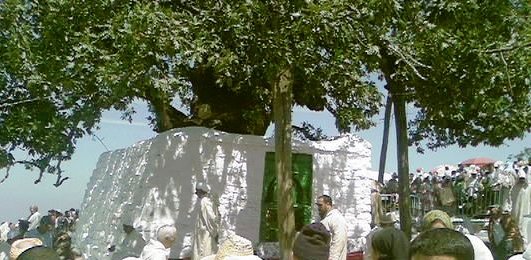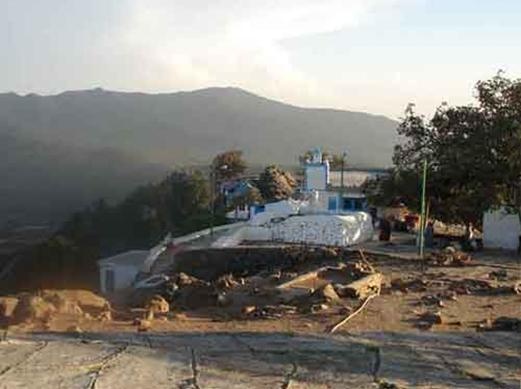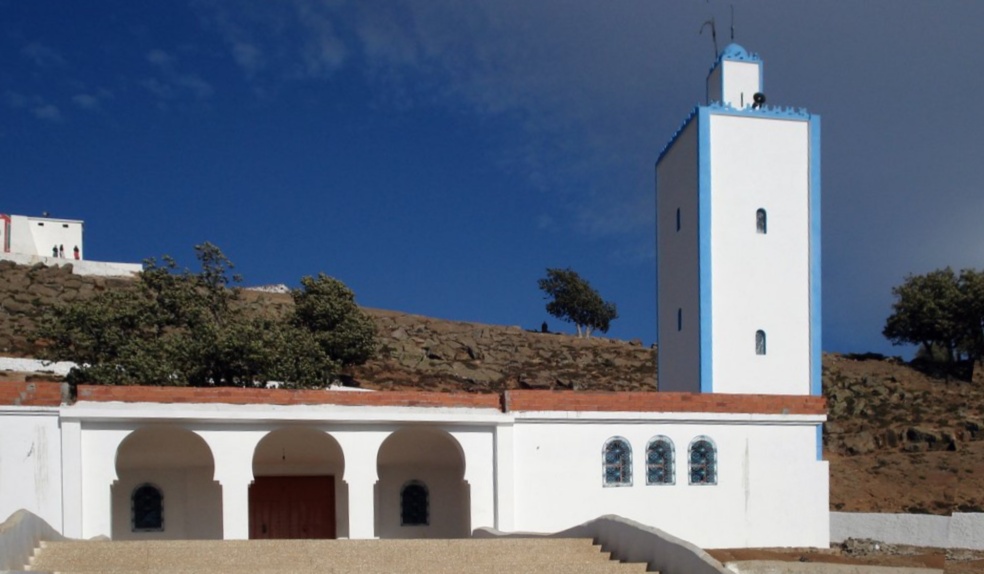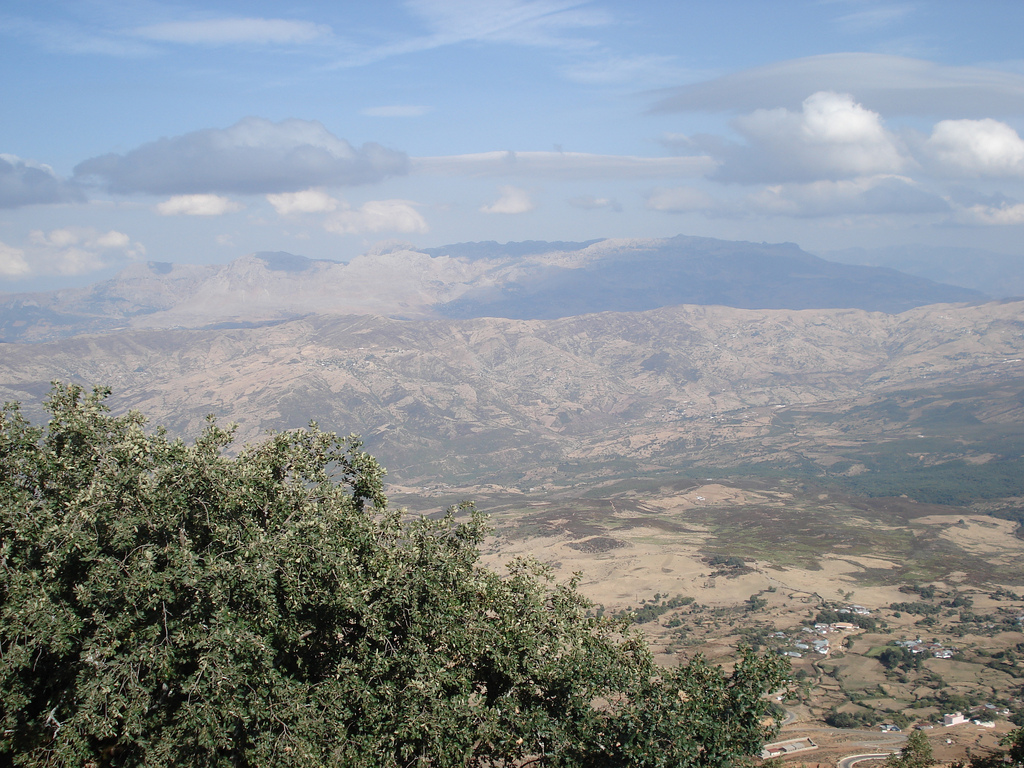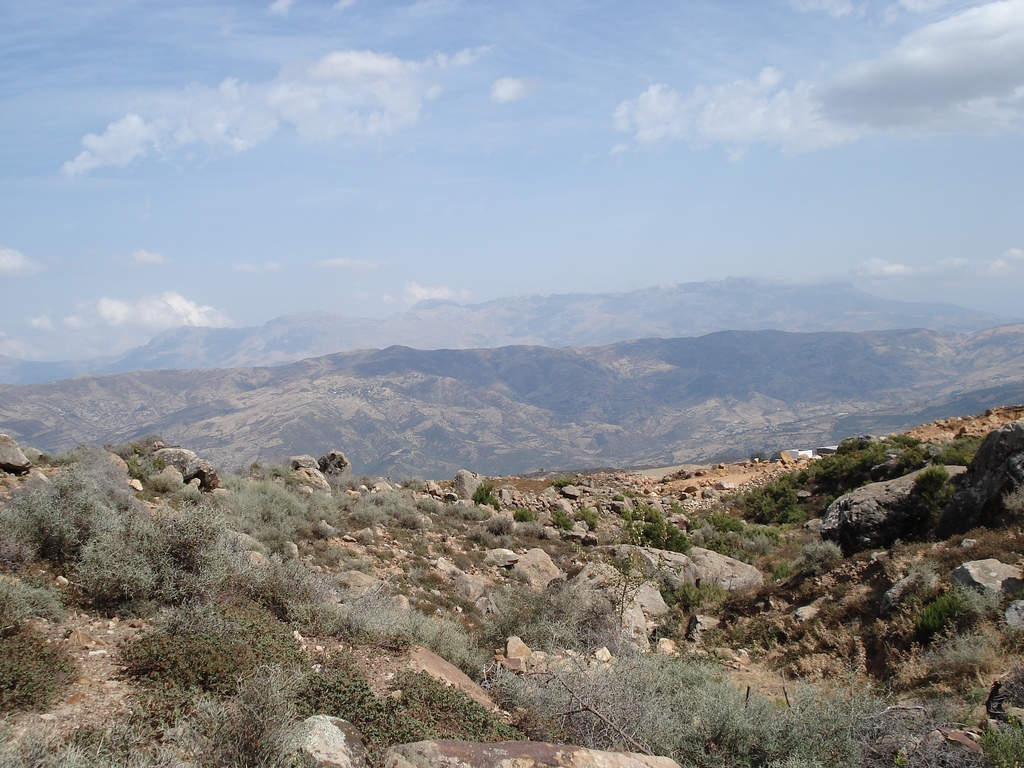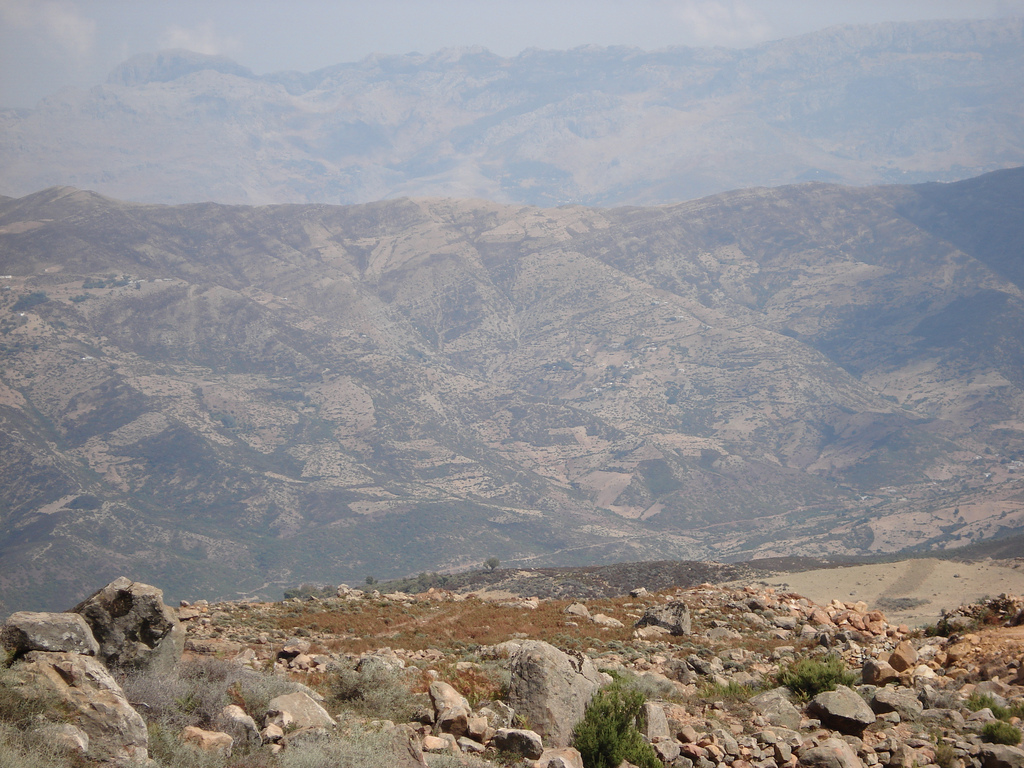Bio: Moulay ‘Abd al-Salam ibn Mashish
Sayyidi Moulay `Abd al-Salam Ibn Mashish al-Hasani al-Idirisi
القطب المُنير سيدي عبد السلام بن مشيش
d. 622 H. Jabal ‘Alam near Tetuan
qaddasa Allah sirrahu
ﷺ
He was `Abd al-Salam ibn Sulayman, known as Ibn Mashish, whose lineage goes back to Sayyiduna Idris, the founder of the city of Fas and descended of Sayyiduna al-Hasan, grandson of the Prophet Muhammad (sallAllah aleihi wa sallam)…
Bio English
1. From Damas Cultural Society
2. From Kuhin: Tabaqat Al-Shadhiliyya
3. From dar-sirr.com
Compiled by bmk / Damas Cultural Society © 2008 – original page
He was `Abd al-Salam ibn Sulayman, known as Ibn Mashish, whose lineage goes back to Sayyiduna Idris, the founder of the city of Fas and descended of Sayyiduna al-Hasan, grandson of the Prophet Muhammad (sallAllah aleihi wa sallam). He was was born around 559 or 563 H. in a village on the `Alam mountain near Titwan, an ancient city in the region of Habt (Ghumara) in northern Maghrib, where one of his forefathers came to settle among the Berbers. He studied the Quran and Maliki law under the Idrisite sharifs of Banu Arus, in addition to prominent Sufi scholars such as Sidi Salem of Qabilat Bani Yusuf and sharif Sidi al-Hajj Ahmed Aqatran Asalani of Qabilat Bani Abraj, near modern Taza. He supported himself by the work of his own hands, tillign the earth. 2 For some time he lived for some time in Sabta, teaching Quranic recitation to children. He and waged jihad , fighting with the Almohad army in al-Andalus. 3
His Lineage2
He was `Abd al-Salam b. Sulayman ibn Abi Bakr b. `Ali al-`Alami b. Buharma b. `Isa b. Salam al.-`Arus b. Ahmad Mazwâr b. `Ali Haydara b. Muhammad b. Idris al-Thani b. Idris al-Awwal b. `Abd Allah al-Kamil b. al-Hasan al.Muthanna b. al-Hasan al-Sibt b. `Ali b. Abi Talib and Fatima al-Zhara daughter of the Messenger of Allah Muhammad b. `Abd Allah – salllAllah `aleihi wa sallam.
His Spiritual Path
He took the spiritual sciences from `Abd al-Rahman ibn al-Husayn al-`Attar, a spice merchant from the city of Sabta, who was called “az-Zayyat” or “al-Madani” because he resided in the oil sellers’ quarter of Medina (where his tomb is still found). His first encounter with Sheikh `Abd al-Rahman al-`Attar took place when he was at the age of seven. He was in a state of jadhb (spriritual attraction) when the Sheikh came to him, dsiplaying the signs of the people of Allah, and said to him: “I am your Sheikh”. He fortold him of his rank, his spiritual states, and mentioned each of his maqams one by one. Then he said: “I am your intermediary (wâsita) in every state and maqam”. 1
The last twenty years of his life Sayyidi Ibn Mashish devoted to worship and contemplation on the heights of Jabal al-`Alam (Flag Mountain), a period which culminated in his encounter with his only disciple, the fellow Idrisite Imam Abul Hasan Shadhili (d. 656 H.)
From him the al-Salat al-Mashishiyya, on which the Wazhifa of Imam Abul Hasan al-Shadhili is based.
His Passing
He died as a martyr year 622 H., when he Spanish, led by their missionary Ibn Abi Tawajin Laktami, headed to Jabal al-Alam and killed the Shaykh in the very place where he initiated Imam Abul Hassan Shadhili. He was buried on the moutain.
Sources
[2] Dr. Amal b. Idris b. al-hasan al-`Alami: `Aqd Farid fi Tarikh al- Shurafa’ al-talid (quoted at ar.wikipedia.org)
[3] From www.dar-sirr.com
© Damas Cultural Society 2007 — Updated 2008, 2010 — Latest update: 2017-05-19
Original page: damas-original.nur.nu
t.b.d.
From Dar-Sirr3
Upon the death of Sidna al-Imam Moulay Idriss II, he left twelve sons, who were sent throughout Morocco by their grandmother Kanza to proliferate the Idrissi-Hassanid sharifism. One Idrissite imam, however, became through his descendents an important figure in the development of the sharifian paradigm of sainthood. Moulay Ali ‘Haydara, a grandson of Moulay Idriss II, received the bay’a as Imam and ruler of Fez in 221/836. When he failed to designate his infant son Moulay Ahmed Mizwar as his successor before his own death in 234/849, the Idrissite imamate passed into the hands of his cousins, the descendents of Moulay Omar ibn Moulay Idriss II, who lived in the regions of Habt and Ghumara in northern Morocco.
After being passed over for the imamate, Moulay Ahmed Mizwar became disenchanted with politics and devoted himself to a life of worship and asceticism. Sometime before the turn of the tenth century, or just before the Idrissite state became a bone of connection between the Fatimids of Ifriqiya and the Umayyads of Spain, he moved from Fez to northern Morocco and established himself at Hajar an-Nasr (Escarpment of the Eagle), a fortes situated in the Habt region among the Sanhaja Berber tribes of Ahl Sarif, Banu Yusuf, and Sumata. As his nickname, Mizwar (Berber. lion or leader) implies, this great grandson of Moulay Idriss II was adopted as a spiritual leader by the tribes who lived near his mountaintop stronghold. According to local tradition, when the chiefs of these tribes asked Moulay Ahmed Mizwar to delegate a member of his family to join them and favour them with the baraka of the Prophet Sidna Mohammed (peace and blessing be upon him) he chose his son Abdessalam (known locally as “Sidi Sellam”). As a means of honouring the young sharif, who had recently married, the tribesman renamed themselves “Banu Arus” (Sons of the Bridegroom), the appellation by which they are known today. For the next seven generations, the descendents of Sidi Sellam established themselves among the Berbers of Banu Arus while maintaining a reputation for holiness that was based almost exclusively on their Hassanid descent.
Birth and childhood Moulaya Abdus-Salam Ibn Mashish
Around the year 530/1135-6, a child named Sulayman, but later named “Mashish” (Ber. Little Cat”), was born to a sharif of the Bani Arus known as Abu Bakr ibn Ali. Upon reaching maturity, Sulayman Mashish withdrew from the world as an ascetic and built a hermitage that still stands among the ruins of his natal village of Aghyul.
In either 559/1146 or 563/1148, he sired a son named Moulay Abdessalam, who would become the patron saint of Moroccan Sufism. According to sources, Moulay Abdessalam became a Fool of God (Majdoub) at the age of 7, when a man, with righteousness on his face, entered on him to a cave and said: “I am your master who initiate you (amudduka)”.
His life
Mawlana Abu Mohammed Moulay Abdessalam Ibn Mashish lived for sixty-three years, the same lifespan as of the prophet Sidna Mohammed, peace and blessing be upon him. During this period, his career passed through three distinct faces. First, he was a scholar and studied the Quran and Maliki jurisprudence under the Idrissite sharifs of Banu Arus in addition to prominent Sufi-scholars such as Sidi Salem of Qabilat Bani Yusuf and sharif Sidi al-Hajj Ahmed Aqatran Asalani of Qabilat Bani Abraj, near modern Taza. Later, he was a mujahid, a defender of the faith, and lived in Sabta, where he supported himself by teaching Quranic recitation to children and fought with the Almohad army in al-Andalus. Finally, after embracing Sufism, he devoted the last twenty years of his life to worship and contemplation on the heights of Jabal al-Alam (Flag Mountain), a period which culminated in his encounter with his only disciple, the fellow Idrissite and founder of the Shadhiliya Sufi order, Sidi Abul Hassan Shadhili (d. 656/1241). Moulay Abdessalam was martyred in 622/1207 after the Spanish, led by their missionary Ibn Abi Tawajin Laktami, headed to Jabal al-Alam and killed the Shaykh in the very place where he initiated Abul Hassan Shadhili. His tomb on Jabal al-Alam is the first visited shrine in Northern Morocco.
عربي
(… – 622)
قطبُ دائرة المحققين، أستاذُ أهل المشارق والمغارب، وسندُ الواصلين إلى أنجح المطالب، سيدنا ومولانا عبد السلام ابن سيدنا مَشيش ابن سيدنا أبي بكر الحسني الإدريسي.
كان رضى الله عنه قطبَ الوجود، وبقية أهل الشهود، الغوث الفرد، الجامع لأسرار المعاني، غوث الأمة، وسراج الملّة، صاحب العلوم اللدنية، والمعارف الربانية، الجامع بين علم الشريعة والحقيقة، لم تطلع الشمسُ على مثله في زمنه.
له كراماتٌ وخوارق لا تدخل تحت حصرٍ، منها: أنه يوم ولادته سمع سيدي عبدُ القادر الجيلاني رضي الله عنه ونفعنا به آمين، هاتفًا يقول: يا عبد القادر، ارفع رجلك عن أهل المغرب، فإنَّ قطبَ المغرب قد ولد في هذا اليوم، فتمشى الأستاذ عبد القادر إلى جبل الأعلام بالمغرب، حيث مولد سيدي عبد السلام، وأتى إلى أبيه سيدي مَشيش، وقال له: أخرجِ لي ولدك. فخرّجَ له أحدَ أولاده، فقال له: ما هذا أريد. فأخرج له أولادَه كلهم، وقال له: ما بقي إلا ولدٌ واحد ولد في هذا اليوم. فقال له سيدي عبد القادر: عليَّ به؛ فهو الذي أُريده. فأخرجه سيدي مَشيش، فأخذه سيدي عبد القادر، ومسحَ عليه، ودعا له.
وكان رضى الله عنه إذا أهلَّ هلال رمضان يمتنعُ عن ثدي أمه، فإذا أذن المغربُ قاربه، وارتضع منه.
ويكفيك في فضله أنَه أستاذُ الأقطاب الثلاثة: سيدي إبراهيم الدُّسوقي، وسيدي أحمد البدوي، وسيدي أبي الحسن الشاذلي رحمهم الله.
توفي رضى الله عنه شهيدًا قتله ابن أبي الطواجن، ودفن بموضعه بجبل الأعلام بثغر تطوان، وبُني عليه مقامٌ، وضريحٌ، وقبة قصيرة.
ومقامُه من الأماكن التي يُستجاب عندها الدعاء، وهذا ممَّا لا شكَّ فيه، وقد جرَّب ذلك غيرُ واحدٍ، ومقامه في أرضِ المغرب، كمقام الشافعيِّ بمصر، وفيه يقول القائل:
اطلب بسرِّ ابن مَشيش ما تُريد * تَنَلْه وإن كان عنكَ بعيد
وكان رضى الله عنه يقول: من زارَ قبري حرَّم الله جسده على النار.
اللهم انفعنا بمحبَّته، وأمتنا على حبّه وأثره آمين.
([1]) عبد السلام بن مشيش بن أبي بكر (منصور) بن علي (أو إبراهيم) الإدريسي الحسني، أبو محمد: ناسك مغربي، اشتهر برسالة له تدعى «الصلاة المشيشية» شرحها كثيرون، ولد في جبل العلم بثغر تطوان، وقتل فيه شهيدًا سنة 622هـ. قتلته جماعة بعثهم رجل يدعى ابن أبي الطواجين الكتامي (ساحر متنبئ) ودفن بقبة الجبل المذكور. [«الأعلام» (4/9)].
Poetry
By His Eminence Shaykh Muhammad Al-Yaqoubi
Composed and recited by the author during the Ziyara to the Maqam of Moulay Ibn Mashish Sept 15-16 2018 / 1440 H.

 The Mine of Light – معدن الأنوار →
The Mine of Light – معدن الأنوار →
 The secrets of the Mashishiyya Prayer – أسرار الصلاة المشيشية
The secrets of the Mashishiyya Prayer – أسرار الصلاة المشيشية
 The Virtues of Moulay AbdusSalam Ibn Mashish – مولاي عبد السلام ابن مشيش
The Virtues of Moulay AbdusSalam Ibn Mashish – مولاي عبد السلام ابن مشيش
Mashishiyya
The Mashishi Prayer
t.b.d.
Photos
of Maolay `Abd al-Salam ibn Mashish on the `Alam mountain, Morocco
Click pictures to enlarge
Photos from Jabal ´Alam: Noor Lesley Petrie
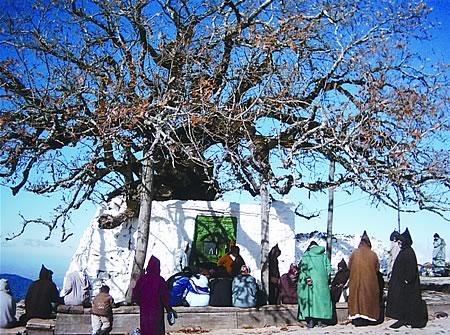
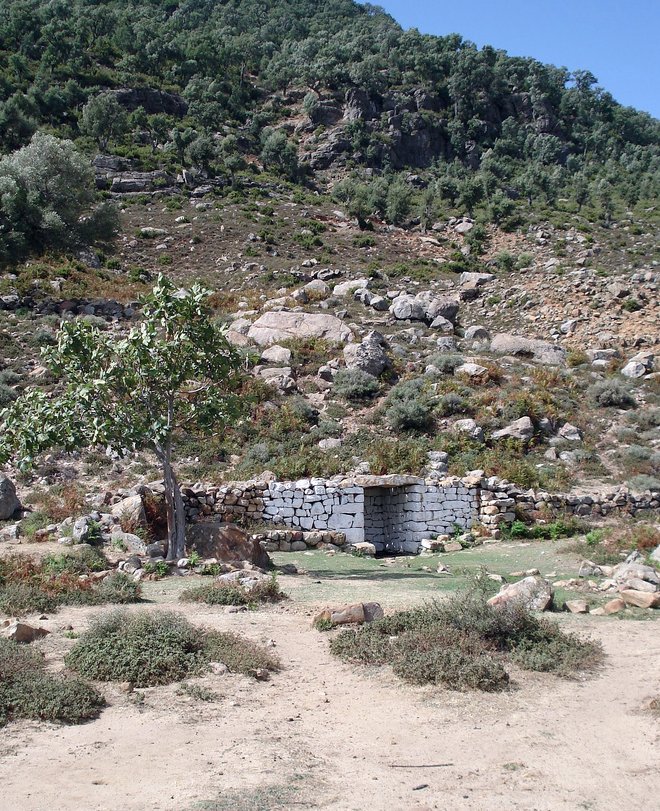 Jabal ´Alam – The well a the foot of the mountain where Sayyiduna Imam Abul Hasan washed before meeting Sayyiduna Ibn Mashish
Jabal ´Alam – The well a the foot of the mountain where Sayyiduna Imam Abul Hasan washed before meeting Sayyiduna Ibn Mashish 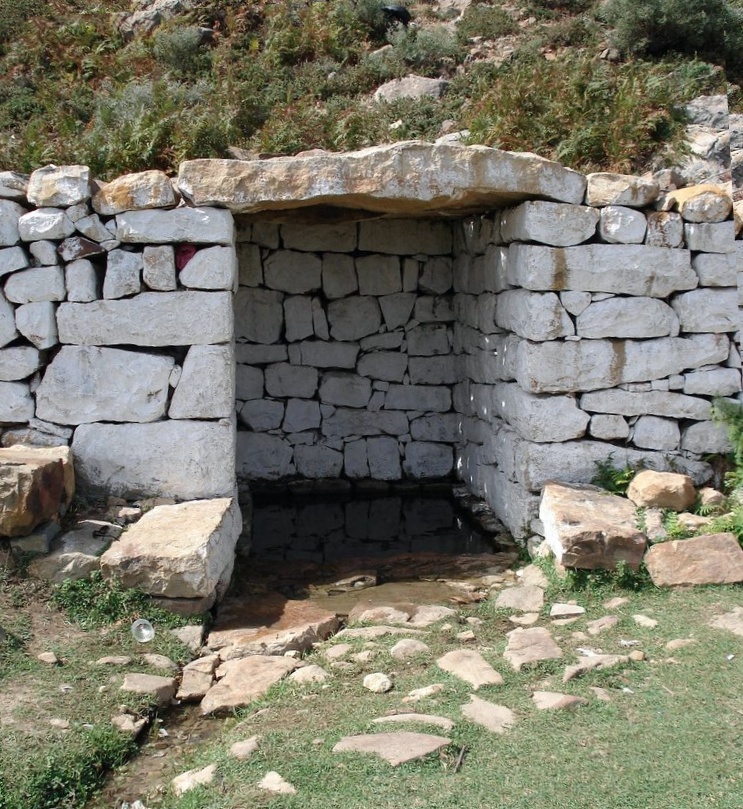
From Anonymous
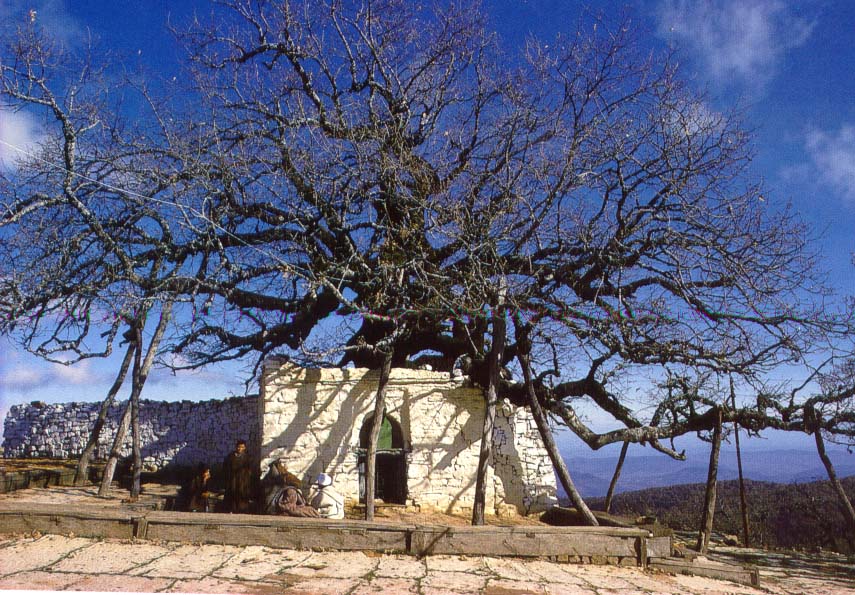
Location
Click to load map
 Show on map
Show on map
